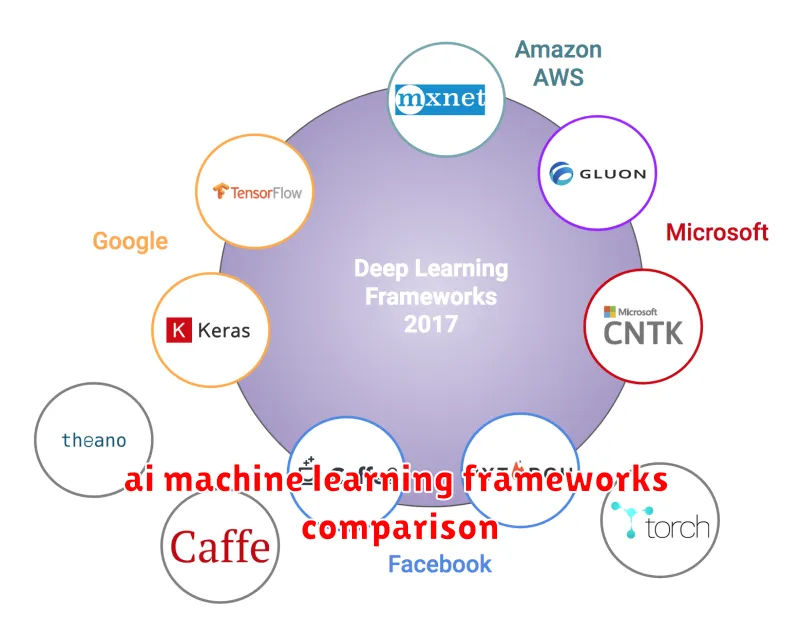In the rapidly evolving world of technology, Artificial Intelligence (AI) and Machine Learning (ML) are transforming industries and shaping our future. These powerful technologies enable machines to learn from data, adapt to new situations, and perform tasks that were once considered exclusive to humans. At the heart of this revolution lie AI and ML frameworks, which provide the tools and infrastructure necessary to build intelligent applications.
These frameworks act as a foundation for developers, providing pre-built components and algorithms that simplify the development process. From image recognition and natural language processing to predictive analytics and autonomous systems, AI and ML frameworks are empowering businesses and individuals to harness the transformative power of these technologies. This article delves into the world of AI and ML frameworks, exploring their key features, popular options, and the impact they have on the development of intelligent applications.
Introduction to AI and Machine Learning Frameworks
The world of Artificial Intelligence (AI) and Machine Learning (ML) is rapidly evolving, driving innovation across industries. At the heart of this revolution lie AI and ML frameworks, providing developers with powerful tools to build intelligent applications.
Frameworks act as the foundation for developing, training, and deploying AI models. They offer a structured environment with pre-built components, libraries, and tools, streamlining the development process. Frameworks simplify complex tasks such as data preprocessing, model selection, optimization, and deployment.
Choosing the right framework is crucial for any AI or ML project. Factors to consider include the specific problem domain, desired level of flexibility, performance requirements, and the developer’s experience.
Here are some popular AI and ML frameworks:
- TensorFlow: Developed by Google, TensorFlow is known for its flexibility and scalability, making it suitable for large-scale deep learning applications.
- PyTorch: Developed by Facebook, PyTorch is popular for its ease of use and dynamic computation graph, making it ideal for research and prototyping.
- Scikit-learn: A powerful Python library for traditional machine learning tasks, providing a wide range of algorithms and tools for classification, regression, clustering, and more.
- Keras: A high-level API that simplifies the development of deep learning models. It can run on top of TensorFlow, Theano, or CNTK.
- Apache Spark MLlib: A scalable machine learning library built on Apache Spark, designed for distributed data processing and large-scale machine learning.
Understanding these frameworks is essential for anyone involved in AI and ML development. They empower developers to build intelligent solutions that transform industries and solve complex problems.
Types of Machine Learning Frameworks
Machine learning frameworks are essential tools for building intelligent applications. They provide a foundation for developing, training, and deploying machine learning models. Frameworks streamline the process by offering pre-built components, libraries, and APIs that simplify common tasks. Let’s explore the different types of machine learning frameworks:
1. Deep Learning Frameworks: These frameworks focus on deep neural networks, which are complex structures inspired by the human brain. They excel in tasks involving image recognition, natural language processing, and time series analysis. Popular deep learning frameworks include:
- TensorFlow: Developed by Google, TensorFlow is a versatile and widely-used framework with strong support for both research and production deployments.
- PyTorch: Developed by Facebook, PyTorch emphasizes flexibility and ease of use, making it popular for research and prototyping.
- Keras: A high-level API that simplifies the development of neural networks. It can run on top of TensorFlow, Theano, or CNTK.
2. Machine Learning Libraries: These libraries offer a collection of algorithms and tools for building machine learning models. They cover a broad range of tasks, including classification, regression, clustering, and dimensionality reduction. Some popular machine learning libraries include:
- Scikit-learn (sklearn): A comprehensive library for Python, providing a wide range of algorithms and tools for machine learning. It’s known for its ease of use and well-documented API.
- XGBoost: A gradient boosting library known for its high performance and accuracy. It’s commonly used for tasks like classification and regression.
- LightGBM: Another gradient boosting library that offers high speed and efficiency. It’s popular for large-scale datasets.
3. Cloud Machine Learning Platforms: Cloud providers offer managed machine learning services, simplifying the development, deployment, and scaling of machine learning applications. These platforms provide pre-trained models, APIs, and tools for various machine learning tasks. Popular cloud machine learning platforms include:
- Amazon SageMaker: A fully managed machine learning service from Amazon Web Services (AWS).
- Google Cloud AI Platform: A comprehensive machine learning platform from Google Cloud.
- Microsoft Azure Machine Learning: A cloud-based machine learning service from Microsoft Azure.
Choosing the right machine learning framework depends on factors such as the specific task, the complexity of the model, the size of the dataset, and the desired performance. Each framework offers unique strengths and weaknesses, and it’s crucial to evaluate your requirements before selecting a suitable framework for your project.
Key Features of AI Frameworks
AI frameworks are the backbone of building intelligent applications, providing a structured environment for developing, training, and deploying machine learning models. These frameworks offer a range of crucial features that simplify the process and empower developers to create powerful AI solutions.
Flexibility and Scalability: AI frameworks are designed to handle diverse machine learning tasks and adapt to varying computational resources. They can scale seamlessly to accommodate large datasets and complex models, ensuring efficient processing and training.
Pre-built Components: To streamline development, frameworks include pre-built components like libraries, APIs, and tools. These pre-trained models, algorithms, and datasets save developers time and effort by providing ready-to-use building blocks.
Ease of Deployment: AI frameworks facilitate the deployment of trained models to production environments. Features like model serving and inference engines allow developers to deploy their models across various platforms and devices.
Community Support: A strong and active community is a significant asset in any technology. AI frameworks benefit from extensive community support, providing access to forums, documentation, and tutorials. Developers can learn, collaborate, and access solutions from experienced users.
Open Source Options: Many popular AI frameworks are open source, allowing developers to access and modify the underlying code. This fosters innovation and collaboration, driving the advancement of AI technologies.
Popular AI and Machine Learning Frameworks
The field of Artificial Intelligence (AI) and Machine Learning (ML) has witnessed tremendous growth, leading to the development of numerous frameworks that facilitate the creation of intelligent applications. These frameworks provide pre-built components, libraries, and tools that streamline the development process, enabling developers to focus on building innovative solutions.
Here are some of the most popular AI and ML frameworks:
TensorFlow
Developed by Google, TensorFlow is an open-source, end-to-end platform for machine learning. Its flexible architecture allows for deployment across various platforms, from mobile devices to large-scale distributed systems. TensorFlow excels in tasks such as image recognition, natural language processing, and time series analysis.
PyTorch
Another popular framework, PyTorch, is also open-source and developed by Facebook. It is known for its dynamic computational graph, making it highly adaptable for research and prototyping. PyTorch’s user-friendly interface and strong community support make it a favorite among researchers and developers.
Scikit-learn
Scikit-learn is a Python library that offers a wide range of algorithms for machine learning, including classification, regression, clustering, and dimensionality reduction. Its simplicity and ease of use make it an excellent choice for beginners and experienced practitioners alike.
Keras
Keras is a high-level API for building deep learning models. It provides a user-friendly interface on top of other frameworks like TensorFlow and Theano. Its modularity and ease of use make it suitable for both rapid prototyping and production-level deployment.
Apache Spark
Apache Spark is a powerful distributed computing framework that excels in processing large datasets. It incorporates MLlib, a library for machine learning algorithms, allowing users to perform large-scale machine learning tasks on distributed systems.
These frameworks empower developers with the necessary tools and libraries to build intelligent applications, driving innovation across various industries. As AI and ML continue to evolve, the frameworks will undoubtedly adapt and expand, offering even more advanced capabilities for future applications.
Choosing the Right Framework for Your Needs
Navigating the diverse world of AI and machine learning frameworks can be overwhelming, with each offering its unique strengths and weaknesses. Choosing the right framework is crucial for building intelligent applications effectively. Your choice should depend on factors such as the complexity of your project, available resources, and the specific problem you’re trying to solve. Consider these key aspects when selecting your framework:
Ease of Use: Opt for frameworks that provide user-friendly APIs, intuitive documentation, and a supportive community. This simplifies development and accelerates the learning curve, especially for beginners.
Scalability: Choose frameworks capable of handling large datasets and complex models, ensuring smooth scaling as your project grows.
Flexibility: Look for frameworks that support a wide range of algorithms and allow for customization to tailor solutions to your specific needs.
Performance: Evaluate frameworks based on their efficiency and speed in training and inference, particularly for real-time applications.
Community and Ecosystem: Consider frameworks with a vibrant community that actively contributes to development, provides support, and shares best practices.
By carefully considering these factors, you can make an informed decision and select the AI and machine learning framework that best aligns with your project requirements.
Building and Deploying AI Models
The development of intelligent applications is fundamentally linked to the process of building and deploying AI models. This process involves several key stages, each with its unique challenges and considerations.
Data Preparation
The foundation of any successful AI model lies in the quality and quantity of data used for training. This phase involves gathering, cleaning, and preprocessing data to ensure it’s suitable for model training. Data cleaning involves handling missing values, inconsistencies, and outliers, while preprocessing may involve scaling, normalization, or feature engineering.
Model Selection and Training
With prepared data, the next step is selecting an appropriate AI model based on the problem’s nature and desired outcomes. This could involve choosing from a range of algorithms such as linear regression, decision trees, support vector machines, or deep neural networks. The chosen model is then trained on the data, allowing it to learn patterns and relationships.
Model Evaluation and Optimization
After training, the model’s performance is evaluated using various metrics tailored to the specific task. This helps determine the model’s effectiveness and identify areas for improvement. Optimization involves fine-tuning hyperparameters or exploring different model architectures to enhance performance.
Deployment and Monitoring
Once the model is deemed satisfactory, it needs to be deployed for real-world use. This involves integrating the trained model into an application or system. Continuous monitoring of the deployed model is crucial to ensure its ongoing performance and identify potential issues that may require retraining or adjustments.
Conclusion
The journey of building and deploying AI models is a continuous cycle of data preparation, model selection, training, evaluation, optimization, deployment, and monitoring. Understanding these stages and the tools available for each can empower developers to create intelligent applications that address a wide range of challenges and deliver impactful solutions.
Model Training and Evaluation
Model training is the process of feeding a machine learning model with data to learn patterns and relationships. It’s the core of building intelligent applications. We need to provide the model with enough data to generalize well and make accurate predictions. The data used for training is typically divided into training, validation, and test sets.
Once the model is trained, we need to evaluate its performance. This is done by measuring how well the model performs on unseen data. There are various metrics used for evaluation depending on the problem and the type of model. Common metrics include accuracy, precision, recall, F1-score, and mean squared error.
The goal of model evaluation is to identify the best-performing model and to understand its strengths and weaknesses. This process helps us to refine the model and improve its performance. It also helps us to identify areas where the model needs more training or where the data needs to be improved.
In summary, model training and evaluation are crucial steps in developing intelligent applications using machine learning. By carefully training and evaluating our models, we can ensure that they are accurate, reliable, and capable of making informed decisions.
Deep Learning Frameworks and Libraries
Deep learning frameworks and libraries are essential tools for building intelligent applications. They provide pre-built components and abstractions that simplify the development process, allowing developers to focus on building innovative solutions rather than reinventing the wheel.
These frameworks and libraries offer a range of functionalities, including:
- Tensor manipulation: Efficiently handling and manipulating multi-dimensional arrays (tensors) which are the fundamental data structures in deep learning.
- Neural network architectures: Pre-built architectures like convolutional neural networks (CNNs), recurrent neural networks (RNNs), and transformers, tailored for specific tasks.
- Training algorithms: Optimization algorithms like stochastic gradient descent (SGD) and its variants for training deep learning models.
- Model deployment: Tools for deploying trained models into production environments for real-time inference.
- Pre-trained models: Access to pre-trained models on large datasets, allowing for transfer learning and fine-tuning for specific tasks.
Some popular deep learning frameworks and libraries include:
- TensorFlow: A comprehensive open-source framework developed by Google, offering flexibility and scalability for research and production.
- PyTorch: A user-friendly framework known for its dynamic computational graph and ease of use, popular for research and prototyping.
- Keras: A high-level API that simplifies deep learning development, often used as a front-end for TensorFlow and Theano.
- MXNet: A flexible and scalable framework, known for its support for distributed training and deployment.
- CNTK: Microsoft’s open-source deep learning toolkit, offering efficient training and deployment capabilities.
The choice of framework or library depends on the specific needs of the project, such as the task at hand, development environment, and performance requirements. Each framework has its strengths and weaknesses, and it’s crucial to consider these factors when making a selection.
Natural Language Processing (NLP) Frameworks
Natural Language Processing (NLP) frameworks are essential tools for developers building AI and machine learning applications that understand and process human language. These frameworks provide pre-built components, libraries, and algorithms that streamline the development process and accelerate time to market. By leveraging NLP frameworks, developers can efficiently tackle complex tasks such as:
- Text classification: Categorizing text into predefined classes (e.g., spam detection, sentiment analysis)
- Named entity recognition: Identifying and classifying named entities (e.g., people, organizations, locations)
- Machine translation: Converting text from one language to another
- Text summarization: Generating concise summaries of large amounts of text
- Question answering: Providing answers to questions posed in natural language
Popular NLP frameworks include:
- SpaCy: A fast, efficient, and user-friendly NLP library for Python, known for its accuracy and speed.
- NLTK (Natural Language Toolkit): A comprehensive toolkit for working with NLP tasks, providing a wide range of resources and functionalities.
- Stanford CoreNLP: A suite of NLP tools developed at Stanford University, offering advanced features for tasks such as sentiment analysis and named entity recognition.
- Hugging Face Transformers: A library containing pre-trained models for various NLP tasks, facilitating transfer learning and enabling state-of-the-art results.
The choice of NLP framework depends on the specific application requirements, including the desired features, performance, and ease of use. By selecting the right framework, developers can effectively leverage the power of NLP to build intelligent applications that understand and interact with human language.
Computer Vision Frameworks
Computer vision frameworks are a crucial component of AI and machine learning, enabling the development of intelligent applications that can “see” and interpret the world around them. These frameworks provide a set of tools and libraries that simplify the process of building computer vision models, from data preprocessing and augmentation to model training and deployment.
Here are some of the most popular computer vision frameworks:
OpenCV
OpenCV (Open Source Computer Vision Library) is a widely used framework known for its extensive library of algorithms and functions. It offers a rich set of tools for image and video processing, including object detection, tracking, recognition, and segmentation. OpenCV is highly versatile and can be used for various applications, such as self-driving cars, robotics, and medical imaging.
TensorFlow
TensorFlow is a powerful open-source framework developed by Google. It is primarily known for its deep learning capabilities, but it also excels in computer vision tasks. TensorFlow provides efficient tools for image classification, object detection, and image segmentation. Its high-performance computing capabilities make it suitable for large-scale computer vision projects.
PyTorch
PyTorch is another popular deep learning framework developed by Facebook. Its flexibility and ease of use make it a popular choice for researchers and developers. PyTorch offers a dynamic computational graph, which allows for more intuitive model building and debugging. Its strong community support and extensive documentation contribute to its popularity.
Keras
Keras is a high-level neural network API written in Python. It simplifies the process of building and training deep learning models, including computer vision models. Keras is known for its user-friendly interface and ability to run on top of other frameworks like TensorFlow or Theano. It is a great option for beginners looking to get started with computer vision.
The choice of computer vision framework depends on the specific application, project requirements, and developer preferences. Each framework offers unique strengths and features, allowing developers to select the best option for their needs.
TensorFlow for Deep Learning
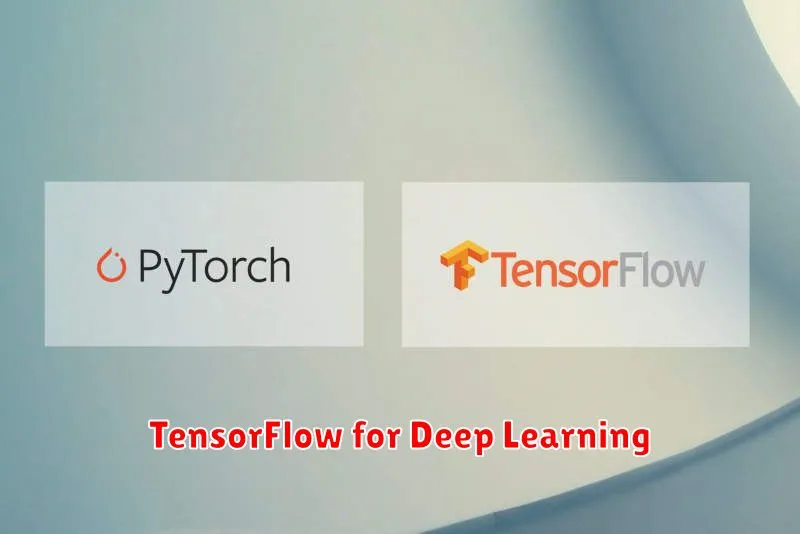
TensorFlow is an open-source machine learning library developed by Google. It’s a powerful tool for building and deploying deep learning models, enabling you to solve complex problems in various domains. TensorFlow is known for its flexibility, scalability, and ease of use, making it a popular choice for both researchers and developers.
Key Features of TensorFlow
- Tensor Operations: TensorFlow’s core is built around tensors, multidimensional arrays that represent data. These tensors are manipulated using a variety of operations for computations, making it ideal for numerical computing tasks.
- Deep Learning Models: It offers a wide range of deep learning algorithms, including convolutional neural networks (CNNs), recurrent neural networks (RNNs), and long short-term memory (LSTM) networks. These models are well-suited for tasks like image classification, natural language processing, and time series analysis.
- Graph Computation: TensorFlow uses a computational graph to represent the flow of data and operations. This approach provides optimized performance and facilitates distributed training across multiple devices.
- Flexibility and Scalability: TensorFlow can be used on various platforms, from CPUs and GPUs to TPUs and mobile devices. It scales seamlessly from small-scale experiments to large-scale production deployments.
- Eager Execution: TensorFlow’s eager execution mode allows for interactive development, where operations are executed immediately, making debugging and prototyping easier.
Applications of TensorFlow
TensorFlow has revolutionized various fields with its deep learning capabilities. Some prominent applications include:
- Image Recognition: Identifying objects, faces, and scenes in images.
- Natural Language Processing: Understanding and generating human language, including tasks like machine translation and sentiment analysis.
- Time Series Forecasting: Predicting future values based on historical data, such as stock prices or weather patterns.
- Recommender Systems: Personalizing recommendations for users based on their preferences and past behavior.
- Robotics: Enabling robots to learn and adapt to their environment.
Getting Started with TensorFlow
Getting started with TensorFlow is straightforward. You can install it using pip or conda package managers. The official TensorFlow documentation provides comprehensive tutorials, examples, and resources to guide you through the process. There are also numerous online courses and communities where you can learn from experts and connect with other TensorFlow users.
PyTorch for Machine Learning
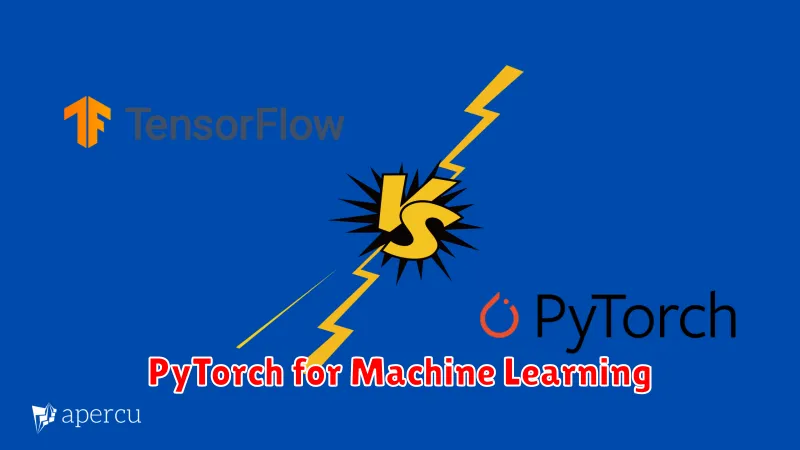
PyTorch is a popular open-source machine learning framework developed by Facebook’s AI Research lab. It’s known for its flexibility, ease of use, and strong community support, making it a go-to choice for researchers and developers alike. PyTorch allows you to build complex deep learning models, perform various machine learning tasks, and deploy your models on different platforms.
One of the key advantages of PyTorch is its dynamic computation graph. Unlike static computation graphs in other frameworks, PyTorch’s graph is built and modified on the fly. This provides greater flexibility and allows for more intuitive model building and debugging. The framework also offers a Pythonic API, which makes it easy for developers familiar with Python to learn and use.
PyTorch’s popularity is further enhanced by its extensive ecosystem. It comes with a vast collection of pre-trained models, datasets, and tools that simplify and accelerate the development process. Additionally, the strong community support means you’ll find ample resources, tutorials, and forums for assistance.
Here are some of the key features that make PyTorch a valuable tool for machine learning:
- Tensor computation: PyTorch provides a powerful tensor library for numerical computation, similar to NumPy, but with GPU acceleration for efficient training.
- Neural network building: PyTorch allows you to easily define, train, and deploy neural networks using its high-level API and modules.
- Automatic differentiation: PyTorch automatically calculates gradients for your models, simplifying the backpropagation process.
- Dynamic computation graph: PyTorch’s dynamic graph allows for more flexible and intuitive model building.
- Deployment: PyTorch models can be deployed on various platforms, including CPUs, GPUs, and even mobile devices.
PyTorch is widely used in various applications, including image classification, natural language processing, object detection, and reinforcement learning. Its flexibility and ease of use make it a great choice for both beginners and experienced developers looking to build powerful machine learning models.
Scikit-learn for Machine Learning in Python
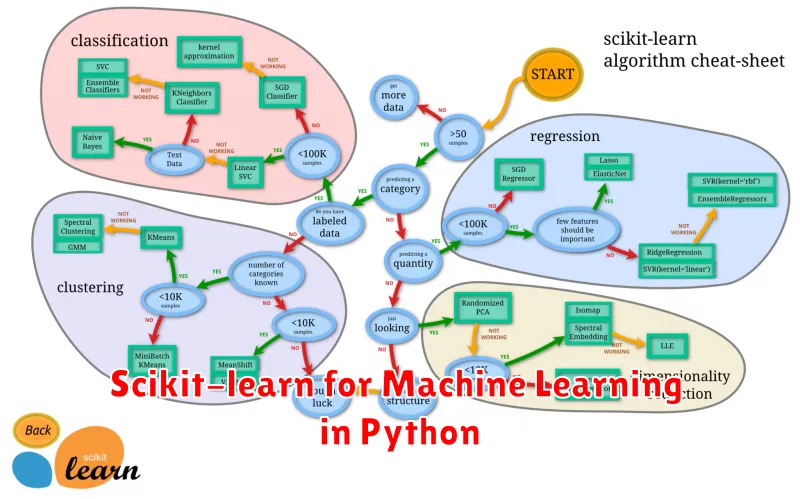
Scikit-learn is a powerful and versatile Python library that provides a wide range of tools for building machine learning models. It’s a cornerstone for data scientists and developers working with AI applications, offering a user-friendly interface and extensive documentation.
One of the key strengths of Scikit-learn lies in its comprehensiveness. It offers algorithms for various machine learning tasks, including:
- Classification: Identifying the category to which a data point belongs (e.g., spam detection).
- Regression: Predicting continuous values (e.g., predicting house prices).
- Clustering: Grouping similar data points together (e.g., customer segmentation).
- Dimensionality Reduction: Simplifying data by reducing the number of features (e.g., principal component analysis).
Scikit-learn’s ease of use makes it accessible to both beginners and experienced developers. Its consistent API allows you to switch between different algorithms without major code changes. The library also offers robust preprocessing tools for data cleaning and feature engineering.
Here are some notable advantages of using Scikit-learn:
- Open-source and free to use
- Well-documented and supported by a large community
- Comprehensive range of algorithms and tools
- User-friendly and consistent API
- Tight integration with other Python libraries like NumPy and Pandas
Scikit-learn plays a crucial role in the development of intelligent applications. Whether you’re building a recommendation system, a fraud detection model, or a natural language processing application, Scikit-learn provides the tools and flexibility you need to turn data into insights and solutions.
Keras for Building Neural Networks

Keras is a high-level, user-friendly neural network library written in Python. It’s designed to be simple and easy to use, allowing developers to quickly build and experiment with different neural network architectures. Keras runs on top of other popular libraries like TensorFlow, Theano, or CNTK, providing a common interface for working with different backends.
One of the key strengths of Keras is its modularity. It breaks down the process of building neural networks into smaller, reusable components. These components include layers, optimizers, activation functions, and loss functions. By combining these components, you can construct complex neural networks with ease.
Keras also boasts a strong emphasis on ease of use. It provides a clean and concise API that makes it straightforward to define and train neural networks. The library handles many of the complexities of deep learning, allowing developers to focus on the core logic of their models.
Here are some key advantages of using Keras for building neural networks:
- User-friendly API: Keras is known for its simple and intuitive API, which makes it easy to understand and use.
- Modularity: Keras allows you to build neural networks by combining different components like layers and optimizers.
- Extensibility: You can easily extend Keras with custom layers, loss functions, and other components.
- Support for multiple backends: Keras supports popular deep learning frameworks like TensorFlow, Theano, and CNTK.
- Large and active community: Keras has a vibrant community of developers and users, providing ample resources and support.
Whether you’re a beginner or an experienced deep learning practitioner, Keras provides a powerful and versatile tool for building and deploying neural networks. Its user-friendly interface and comprehensive features make it an excellent choice for a wide range of applications.
OpenCV for Computer Vision Tasks
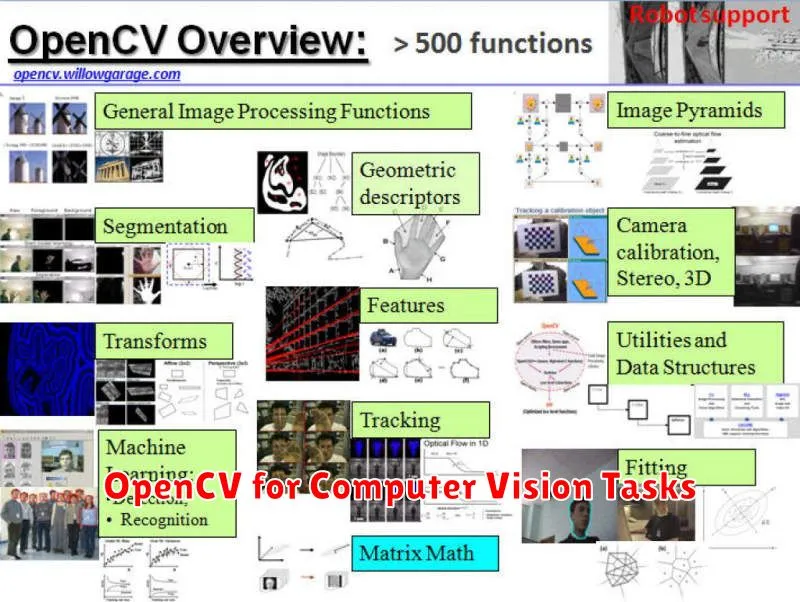
OpenCV (Open Source Computer Vision Library) is a powerful and versatile library widely used for computer vision tasks. It provides a comprehensive set of functions and algorithms for image and video processing, analysis, and manipulation. OpenCV’s capabilities extend across various applications, including:
- Object Detection: Identifying and localizing objects within images and videos. Examples include detecting faces, cars, pedestrians, and more.
- Image Segmentation: Dividing an image into different regions based on certain characteristics, such as color, texture, or edges.
- Feature Extraction: Identifying distinctive features in images, such as corners, edges, or shapes.
- Optical Flow: Tracking the movement of objects or pixels between frames in a video sequence.
- Image Recognition: Classifying and recognizing images based on their content.
OpenCV’s cross-platform compatibility, efficient performance, and rich set of features make it an ideal choice for developing computer vision applications. It offers a wide range of tools, including:
- Image Processing Functions: Operations such as filtering, resizing, color space conversion, and image enhancement.
- Feature Detection and Description Algorithms: Methods for identifying and describing features like SIFT, SURF, and ORB.
- Machine Learning Algorithms: Support for training and deploying machine learning models for computer vision tasks.
- Deep Learning Frameworks Integration: Compatibility with popular deep learning frameworks like TensorFlow and PyTorch.
OpenCV empowers developers to build robust and intelligent computer vision applications. Its open-source nature fosters collaboration and innovation within the computer vision community.

